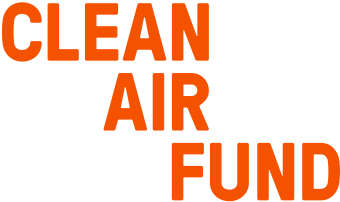The Air Pollution Footprint Partnership (APFP) aims to help organisations understand, report and take action on air pollution. The tool was first launched in June 2023, and since then, we have engaged with over 300 organisations.
Where APFP started
APFP launched in June 2023 with funding from two philanthropic organisations, Clean Air Fund and Impact on Urban Health.
 Clean Air Fund is a global philanthropic organisation working with governments, funders, business and campaigners to create a future where everyone breathes clean air. We fund and partner with organisations that promote air quality data, build public demand for clean air and drive policy change. |  Impact on Urban Health are a charity committed to achieving health equity by helping urban areas become healthier places for everyone to live. IoUH address health inequalities by focusing on a few complex health issues that disproportionately impact people living in cities – children’s health and food, multiple long-term conditions, the health effects of air pollution, and children’s mental health. |
Pilot Scheme
Before the launch of the APFP, 13 organisations trialled the tool in the pilot phase and generated emission values (kg) and damage costs (£) per year for each sector. All of these organisations contributed to air pollution by operating fleet, generating heat and power, or being involved in construction activities.
The tool allowed the pilot organisations to understand which of their emission sources contribute the most to air pollution emissions and damage costs, thereby providing direction on where they should focus their efforts to most effectively reduce their air pollution footprint.
After the pilot scheme, the Air Pollution Footprint Partnership and the tool were launched in June 2023 at Reset Connect during London Climate Action Week and on Clean Air Day 2023. The tool was made available to download via our website.
Air Pollution Champions
Once we became more established, we launched our Air Pollution Champions scheme, where organisations could volunteer for additional support. A member of the team was assigned and worked closely with the Champion to implement their data into the tool and generate results for internal and external reporting.
Where are we now?
Sponsorship from the Clean Air Fund and Impact on Urban Health is due to end in Summer 2025. However, as the APFP tool has become a valuable resource for many organisations that rely on it to generate their air pollution footprint, the tool is due to become a Ricardo-owned tool.
There will remain to be a free trial version of the tool on our website so that all organisations have access to a tool that allows them to investigate their air pollution footprint.
If you would like more bespoke and detailed support in generating your air pollution footprint, please contact the team via our contact form.

Ricardo is a global team of consultants, environmental specialists, engineers and scientists who deliver innovative and cross-sector sustainable solutions that help our clients to create a safe and sustainable world. Ricardo is one of Europe’s leading and largest specialist emission inventory compilation teams.